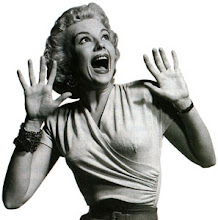The Blind Side has achieved something rather amazing; it has completely marginalised the central character in his own story. Based on the real life of Michael Oher, who went from being a homeless teenager to a highly sort after NFL player, the film chooses to focuses instead on Sandra Bullock’s character, Leigh Anne Tuohy the rich, White, Republican woman who ‘saved’ him.
The Blind Side is a meant to be a heart-warming story. Unfortunately the story’s sweetness is overshadowed by its unsettling paternalism. Set in Memphis, Tennessee, Michael Oher (Quinton Aaron) is a large Black teenager with a drug-addicted mother and an unstable home-life. Oher’s potential athletic abilities convince a suburban Baptist school to give him a scholarship. But Oher’s turbulent living arrangements look set to disturb his improved educational situation, until the Tuohy family intervene. When Leigh Anne and Sean Tuohy (Tim McGraw) pass a dejected Oher, clothed only in shorts and a t-shirt despite the wintry conditions, the wealthy family take him in.
The real Tuohy family were obviously kind people who seeing someone in trouble went above what is expected. Unfortunately the film is not so nice. When all the Black people in a film are poor drug-users and gang-bangers, and all the White people are friendly Christians who just love helping people and watching American football, the disproportion in representation is alarming. Starting from the film’s poster, the message, consciously or not, is that Black talent is best realised in a White world.
The fact that Oher is nearly mute in a film about his life, speaks volumes as to the film’s perspective. Director John Lee Hancock has made Bullock the main attraction as a ‘motherly saint’, and sidelined Oher as a ‘gentle giant’. This is lazy filmmaking, allowing the film to rely on quasi- racial stereotypes, that are enough to make you want to choke on your popcorn.
1/5
The Blind Side is a meant to be a heart-warming story. Unfortunately the story’s sweetness is overshadowed by its unsettling paternalism. Set in Memphis, Tennessee, Michael Oher (Quinton Aaron) is a large Black teenager with a drug-addicted mother and an unstable home-life. Oher’s potential athletic abilities convince a suburban Baptist school to give him a scholarship. But Oher’s turbulent living arrangements look set to disturb his improved educational situation, until the Tuohy family intervene. When Leigh Anne and Sean Tuohy (Tim McGraw) pass a dejected Oher, clothed only in shorts and a t-shirt despite the wintry conditions, the wealthy family take him in.
The real Tuohy family were obviously kind people who seeing someone in trouble went above what is expected. Unfortunately the film is not so nice. When all the Black people in a film are poor drug-users and gang-bangers, and all the White people are friendly Christians who just love helping people and watching American football, the disproportion in representation is alarming. Starting from the film’s poster, the message, consciously or not, is that Black talent is best realised in a White world.
The fact that Oher is nearly mute in a film about his life, speaks volumes as to the film’s perspective. Director John Lee Hancock has made Bullock the main attraction as a ‘motherly saint’, and sidelined Oher as a ‘gentle giant’. This is lazy filmmaking, allowing the film to rely on quasi- racial stereotypes, that are enough to make you want to choke on your popcorn.
1/5
Published in The Brag 01/03/10



